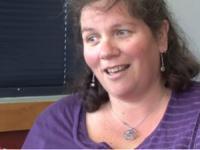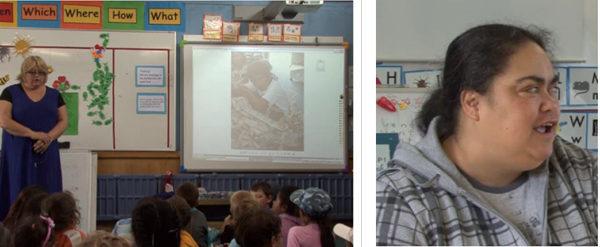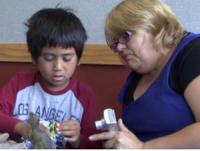Images of what?
At Windley School...
Vanessa Hendry, Assistant principal, talks about photographs that show learning. She suggests images
of students not just in ‘adventures in learning’ time,
but also of them learning in maths and literacy. She describes how images can be used in a learning story,
or IEP, to show students in a positive light.
Think about
Images at various stages of learning tasks
For key competencies, images of both the process and outcomes of learning are important.
They might reflect what happens before, during, or after a particular task. For example:
- before – planning, considering, contemplating, wondering
- during – checking, contemplating, challenging
- after – reflecting, self-evaluating, comparing.
Images of various combinations of students
Some key competencies are demonstrated by students working on their own, others with small or whole-class groups of peers. Images might reflect learning happening:
- individually
- in pairs
- in groups
- in a whole-class situation.
Images taken in various contexts
Since authentic contexts, and transferring learning across contexts, are important for key competencies, images of students learning (and applying their learning) in a range of settings will be important. Images will show them, for example:
- at home
- at school
- in their own community
- in communities beyond their own.
What images have you and/or your students captured?
How could images be used?
At Windley School...
Vanessa talks about images being used in learning stories, like the ones they saw when they visited a local kindergarten. At Windley School, images of students learning are used both on paper and on-screen, with students taking a copy of their learning stories home to their family/whānau.
Think about
For, and with, parents and whānau
Images provide a rich way of reporting to parents and whānau about students’ learning. The video files in the Windley School digital story of a learner imitating his peers and learning to swim were clearly very special for his mother and grandmother. Teachers can show examples of key competencies, rather than just writing about them. Both still and moving images can be a prompt for discussion between teachers, parents, and students at conferences or in other discussions. This, in turn, will help key competencies to be supported both at school and at home.
Learning stories
In learning stories, images can accompany descriptions and student/ teacher voice about learning experiences.
Reflection logs
In reflections logs, images can help students recall not only what they did, but how they felt. An image may trigger, for example, memories of challenges faced, successes experienced, and questions raised.
Sharing with other students
As well as sharing images with students, their parents and whānau, images could be shared between classes. In this way, learners can ‘see’ what key competencies look like, rather than just ‘hear about’ what might be expected.
Return to top
How could images be captured?
Vanessa describes how the digital camera is close to hand and used ‘like a pen’: 'It’s like a pen beside you, the digital camera, and when the opportunities arise, you quickly start recording because you’re seeing children using the key competencies, and you’re going to have really good data and evidence to show and share.'
Think about
Planned and unplanned
At times the capturing of images will be planned in advance. Teachers and students will know that the digital camera is going to be used in the upcoming session. Unplanned opportunities will also arise, and images can be captured spontaneously as students show the key competencies in action.
Students and teachers
Students should become increasingly aware of moments in their own and others’ learning that would be ideal to capture with images. Both teachers and students should have access to the tools they need to capture and use those images.
Across learning times
Key competencies are not just about what happens inside classrooms, they are about students' capabilities in a range of settings. Images could be captured both inside and outside of the classroom, capturing competencies that occur in the playground as well as inside.
Return to top





